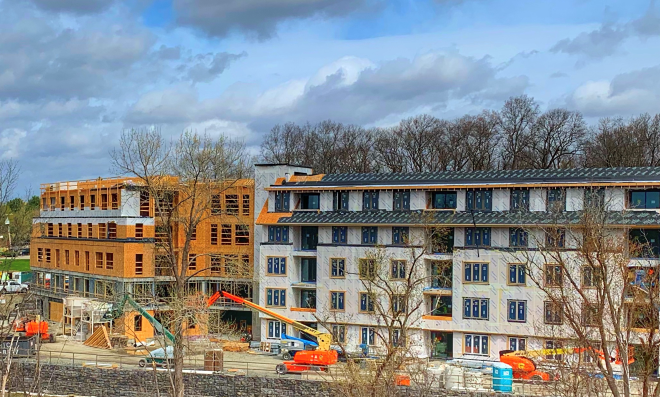- Who We Are
-
Our Work
-
Educational
- Brooks School- George and Evanthea Demoulas Family Boathouse
- Riverbend School - Gym and Schoolhouse
- Lesley University- Animation Studio
- Middlesex School- Bass Arts Pavilion and Danoff Visual Arts Center
- Nashoba Brooks School- Sureau Family Discovery Barn
- The Southport School- Arts and Music Building
- Senior Living
- Hospitality
-
Healthcare
- Partners Urgent Care
- Yale New Haven Health- Medical Office Building
- The Hospital of Central Connecticut - Advanced Wound and Hyperbaric Medicine Center
- Connecticut Children's - Infusion Center and Gastrointestinal Clinic
- Connecticut Children's - Specialty Care Center
- MidState Medical Center- Post-Anesthesia Care Unit Expansion & Renovation
- Commercial
- Specialty Work
-
Educational
- How We Do It
- Our Blog
- Industry Tidbits
- Join Our Family
- Contact Us
Does Your Contractor Really Understand Your Programming Goals?
March 25th, 2021
The delivery of accurate and reliable information is what ultimately defines a successful and valuable preconstruction process.
When you bring a contractor on during the preconstruction phase, don’t assume they understand the goals and objectives of your project. In most cases, you’ve already been working with the architect for some time, so it’s easy to forget the contractor doesn’t have the same intimate knowledge and background of the project the architect has.
For example, I remember discovering the priority one owner was placing on improved traffic flow when I started questioning what appeared to be a less than optimal location for the elevator. The priority on traffic flow wasn’t evident or communicated to us, so the value engineering proposal to optimize the elevator was a wasted effort. Eliminating these gaps of understanding allows the contractor to become a more integral team member and provide more value to you during Preconstruction.
 Gaining these understandings and knowledge as quickly as possible is critical to early Preconstruction work, which includes the initial budgeting, development of the project schedule and early logistics planning, just to name a few. With the design documents in a schematic state, there’s obviously a lot of missing information, because the design is still in progress. This makes it that much more critical that we understand not only the primary goal of the project, but the secondary and tertiary goals and objectives. This allows us to fill in the gaps more reliably and accurately during the early phases of the project.
Gaining these understandings and knowledge as quickly as possible is critical to early Preconstruction work, which includes the initial budgeting, development of the project schedule and early logistics planning, just to name a few. With the design documents in a schematic state, there’s obviously a lot of missing information, because the design is still in progress. This makes it that much more critical that we understand not only the primary goal of the project, but the secondary and tertiary goals and objectives. This allows us to fill in the gaps more reliably and accurately during the early phases of the project.
In many cases, the RFP describes the primary goals. However, in some cases, the RFP is only a request for cost information such as fee and general conditions on pre-schematic plans. So how can you help a contractor gain this information quickly?
Goal Discovery Process
At our first Preconstruction Kickoff Meeting, we like to ask a series of questions to the architect, Owner’s Representative (if there is one) and each of your team members. These are:
- What are your goals and objectives for this project? Why are you building this building?
- What’s important to you on this project?
- How would you define a successful project?
- What’s critical to the neighborhood?
- Explain any commitments to the town or requirements of the town approval.
These questions provide some serious insight into the project. In many cases, we learn the goals and objectives are multi-faceted and have some slight variation between the team members. The simple goal of building the project for the lowest cost is usually only a passing comment during these discussions.
Page Turning Session
 We strongly recommend the contractor and architect sit down together and have a page turning session. This is where the contractor asks lots of questions, while the architect goes through every page of the drawings to share the design intent, critical aspects or areas of focus, expectations as the design progresses and any other information that comes to light during this process.
We strongly recommend the contractor and architect sit down together and have a page turning session. This is where the contractor asks lots of questions, while the architect goes through every page of the drawings to share the design intent, critical aspects or areas of focus, expectations as the design progresses and any other information that comes to light during this process.
These conversations provide the contractor with a greater understanding of the project and the ability to provide information with more accuracy and reliability – the two most important deliverables of a valuable preconstruction process.
Read our post Improving Project Outcomes through Preconstruction.










